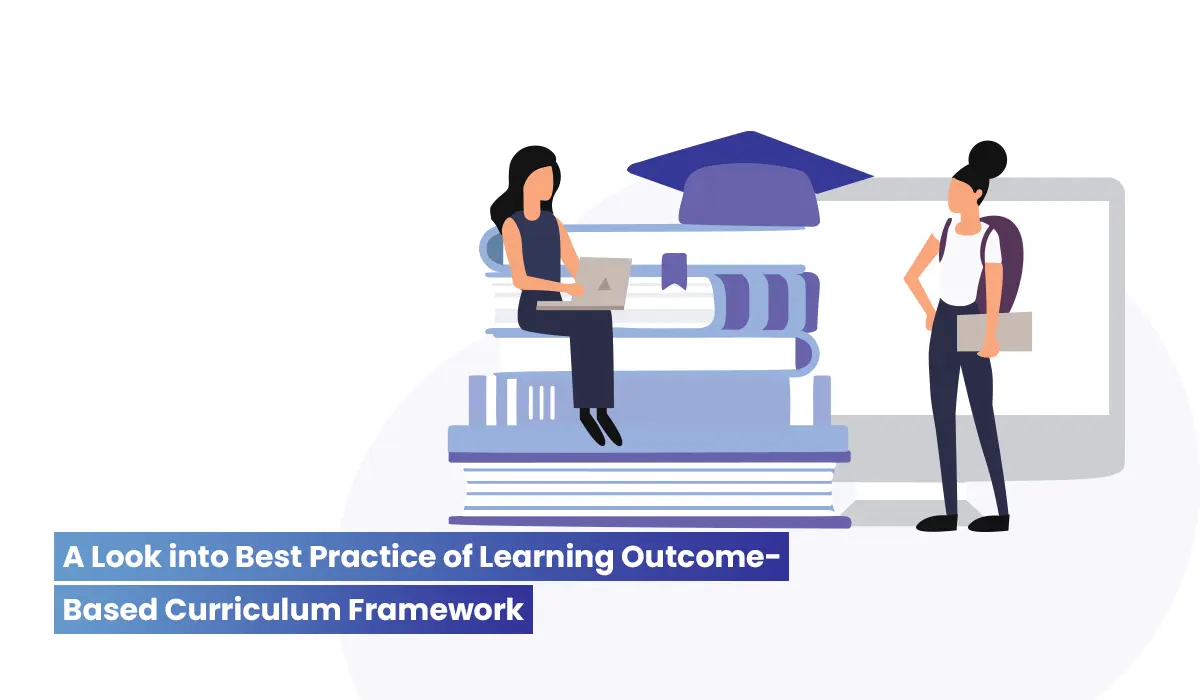Smartphones and laptops have always been seen as a distraction, a concern that’s being magnified among a digital-savvy generation. Dr. James Lang, celebrated professor and author, thinks it’s time to change the narrative. At our webinar on December 1, Lang offered practical tips for instructors who want to ensure their students don’t check out during class. We’ve summarized his recommendations for renewing focus and attention below.
→ Dr. James Lang on teaching distracted minds [Webinar on-demand]
What was the motivation behind writing your latest book, Distracted: Why Students Can’t Focus and What You Can Do About It?
The problem of distraction in the classroom has been one of the major issues faculty members have faced in the last few years. It occurred to me that there’s an opportunity here for us to push education forward if we can use that problem to think about what we’re doing, and consider the best ways to reach today’s students.
My goal in writing the book is to try and get faculty to step away from thinking about distraction as a problem they have to solve, and instead think about, “How do I cultivate and direct the attention of my students? And what creative strategies can I use to help my students pay attention to the course material and one another?”
In the book, you delve into the science behind why we struggle to focus. Why is it important for instructors to have this context?
There’s something important about understanding the history of distraction, as well as understanding the biology behind it. Understanding the history helps you step back and say, “look, it’s not just the devices in the room that are causing students to be distracted. We’ve always been distracted.” This is just the nature of human experience, to feel that we’re not able to focus as much as we would like, and for as long as we would like. Technology intensifies the problem, but it’s not really the source of the problem. Ultimately, a distracted mind is just a human mind. The good news is that novelty can lead to little bursts of satisfaction that make it easier to stay focused.
Scrolling through your news feed when you have nothing else to do isn’t being distracted in your estimation. So how exactly do you define ‘distraction?’
Distraction means doing something that interferes with your goals. If I’m trying to achieve something that is either important to me or that I need to do in order to fulfill a job, distractions are the things that get in the way of me pursuing and achieving those goals.
The longer you try to pay attention to something, the more challenging it becomes given limited cognitive control. It stems from two things:
Our attention fatigues over time. That’s a fundamental feature of our attention systems. At a certain point, you need to stop. Change renews attention. If you leave the task that’s causing you to slowly fatigue, you can do something else, and then come back to it—now your attention has been renewed. We want to use novelty to our advantage, not only in our work lives, but in the classroom.
What role does goal setting play in our ability to maintain focus?
If you have a strong commitment to a goal, you’re probably more likely to stay focused on it. In a classroom setting, you want to make the goal clear to students—or you want to give them the opportunity to form their own goals. That’s the place a lot of educational theorists will go: give students the chance to formulate their own goals, which is good to a certain extent.
The problem you might run into, especially at the beginning of class, is that students don’t even know what the goal possibilities are. First-year students may have trouble setting a goal that will sustain them throughout the semester. Initially, we have to do a decent amount of goal setting and convincing for them. Once we get into the class a bit, then you can give students opportunities to start setting their own goals. Ideally there’s contribution from both sides.
You suggest that how instructors teach is often at odds with how students learn. What’s the disconnect here?
The disconnect is taking for granted that students should pay attention. What we need to think about is how we structure the class in a way that sustains someone’s attention through an extended period of time. We need to think like playwrights. What do they do to maintain attention? They have acts and scenes, there’s an intermission, the action rises and falls. At the beginning of a play, something happens that is designed to intrigue you and get you engaged in the story. I argue in the book that we have to think both like a playwright and like a poet. You have to think like a playwright in terms of the structure. You have to think like a poet in terms of “what’s going to reawaken the attention of my students,” or awaken the attention of my students to this particular content for the day.
You have to think like a playwright in terms of the structure. You have to think like a poet in terms of “what’s going to reawaken the attention of my students,” or awaken the attention of my students to this particular content for the day.
How should instructors adjust their teaching to better support how students learn?
Distraction is the ocean we’re swimming in. Attention is the islands that rise when the circumstances are right. Here are a few ways that I adapt my teaching to keep students alert.
Cultivate community in the classroom: Attention begets attention. If I pay attention to you, you’re more likely to pay attention to me. Be more attentive to the community in the classroom, and try to help students be more attentive to one another. Putting emphasis on community building and attention has to start from the very beginning of your course and must be sustained.
Be deliberate in choosing learning exercises: When I’m lecturing to students about some difficult new content, it needs to be alternated with something that’s going to give students a bit of a break, and let them engage in a task. Pausing throughout class for peer-peer discussion is also proven to boost comprehension.1 Then we can come back to another piece that might be more cognitively challenging. Think deliberately about, “How is attention going to wax and wane throughout this period? And how can I structure and order the events in ways that will keep them focused?”
Intersperse ‘signature attention activities’ throughout class time: I argue for what I call signature attention activities—the things that teachers should have planned throughout the semester. You’re going to get a slump in a 75-minute class. Forty-five minutes in, what are you going to do to get people reawakened for the last half hour? These are the moments that are going to re-energize the class, because attention lags not only in the class period, but throughout the semester. You need to think about the big picture as well.
a. Connection notebooks: Ask students to respond to a prompt such as “how does what you learned today connect to something you’ve learned in another class?” or “have you experienced something you learned today in your life outside of school?”b. Close reading: With a partner, ask students to review a passage from your course text and jot down any questions they have or reflect on how the text connects to other elements of your course. c. Image of the day: Begin class by posting a relevant image on screen and ask students to answer a) what do you notice? and b) what do you wonder? This exercise can help activate students’ prior knowledge and improve retrieval practice.
→ Webinar On-Demand: Dr. James Lang on improving attention and focus
James M. Lang, PhD, is the author of six books, including Distracted: Why Students Can’t Focus and What You Can Do About It and Small Teaching: Everyday Lessons from the Science of Learning. He also writes a monthly column on teaching and learning for The Chronicle of Higher Education, which his work has appeared in since 1999. He is the recipient of a 2016 Fulbright Specialist Grant (Colombia) and the 2019 Paul Ziegler Presidential Award for Excellence in Scholarship at Assumption College.
References
Thaman, R. G. (2014). Effective use of pause procedure to enhance student engagement and learning. Journal of Clinical and Diagnostic Research. https://doi.org/10.7860/jcdr/2014/8260.4691
























